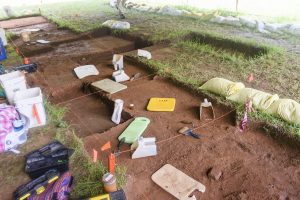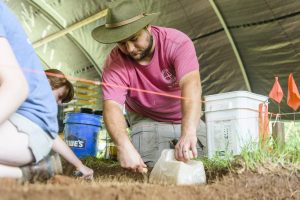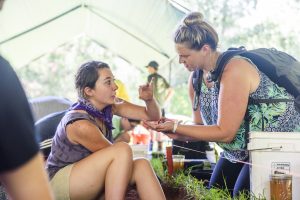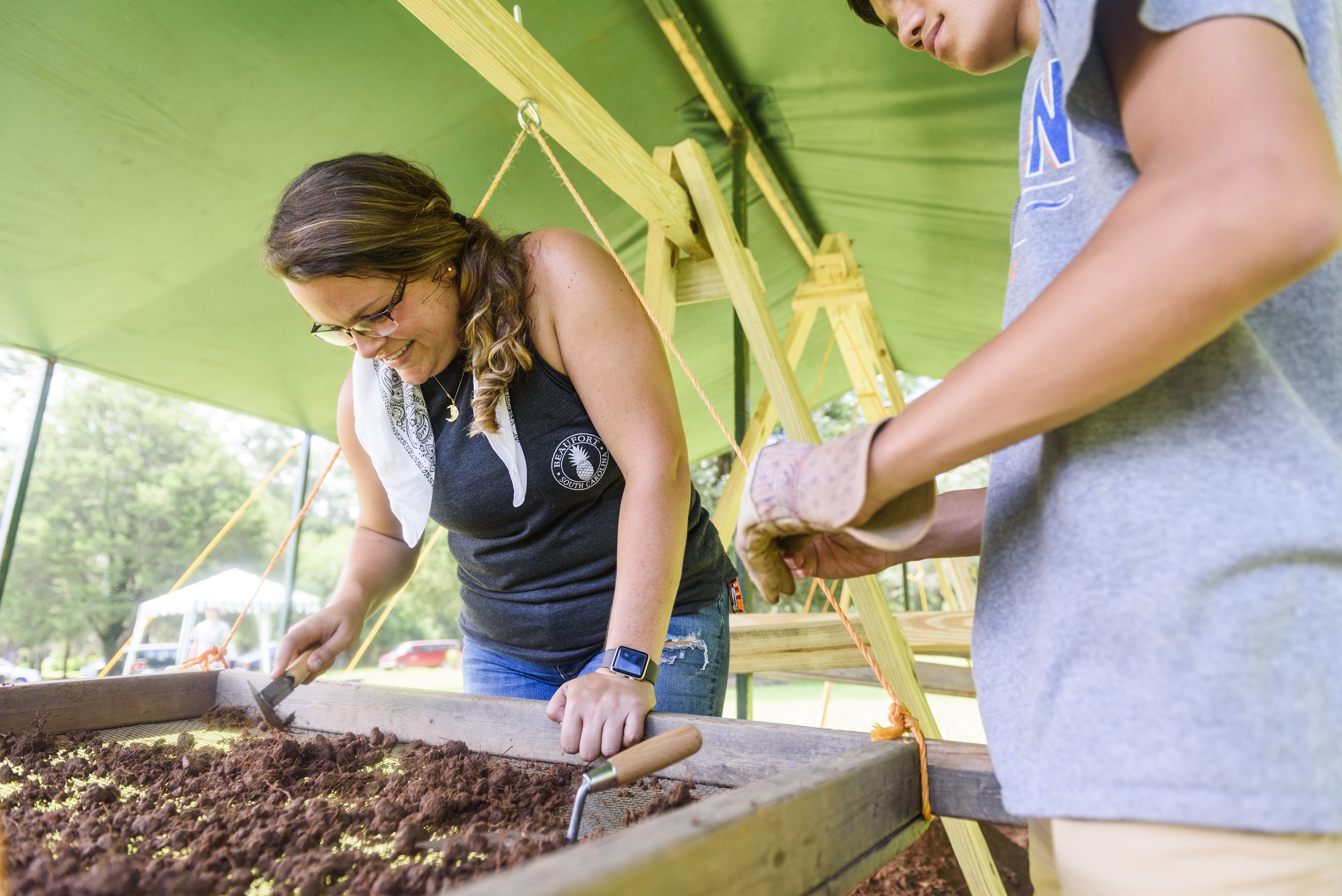
TUSCALOOSA, Ala. — To anyone else, it was just a piece of glass, but to 17-year-old Jordan Sykes the possibilities were endless.
It could have been a piece of window pane from Alabama’s first state Capitol building or a shard from a lantern globe that rested on the table next to the front door. Whatever it was, the Huntsville resident held a piece of history in his hands, and that moment made the sweat, dirt and bugs not seem so bad.
Every summer for the past six years, the Grissom High School senior has been getting his hands dirty while discovering Alabama’s history through The University of Alabama’s Museum Expedition, a program offered through UA’s Alabama Museum of Natural History.
During the expedition, students and community members are able to learn excavation techniques, laboratory procedures and artifact identification through a hands-on field experience at various sites throughout the state.
This year, as part of the state’s bicentennial, participants worked alongside professional archaeologists from the Alabama Historical Commission, or AHC, performing excavations at Old Cahawba in an effort to uncover the original foundation of Alabama’s first Capitol, said Todd Hester, expedition leader and museum naturalist.

Cahawba, now a historic property of AHC, was created as Alabama’s first state capital by legislative act Nov. 21, 1818, and by congressional act March 2, 1819.
The exact location of the statehouse, however, is unknown, said Linda Derry, site director of Old Cahawba. There are no photographs of the building because it collapsed in 1833, and no drawing or painting of the statehouse produced by someone who actually saw it has been found. That was the goal of this year’s expedition — to begin piecing together a picture of the Capitol building.
Expedition participants found numerous artifacts, including brick, mortar, several types of nails, and glass from bottle panels or window panes, as well as other structural components.
Eric Sipes, Alabama Historical Commission senior archaeologist, said participants found what they think to be a wall/builder’s trench and a possible drip line. The wall trench contains diagnostic artifacts that date to the early 19th century, which strongly suggests that these features are related to the first state Capitol.

They also found a lot of pea gravel. Sipes said this could be evidence of a documented path lined with mulberry trees that crossed over the buried remains of the statehouse to reach a cottage on an adjacent lot.
“The items we’re finding tell us so much, but they also raise a lot of questions,” Derry said.
But that is all part of the field experience — discovering the real story about the people from that time.
“It’s one thing to learn about history from a textbook, but another to actually go out and discover it,” Hester said. “Expedition participants learn by touching, feeling. They’re putting their hands on the artifacts. They are the first people to touch this stuff in 200 years. They’re putting their hands on history.”
For Sykes, expedition helped him discover what he wants to do with his life. While he has always liked nature, expedition has opened his eyes to paleontology, history and archaeology, and he hopes to become a naturalist like Hester.
“I’m not interested in just one thing — I like it all,” he said. “And Alabama is the best state to experience all of it. We have such a rich history.”
Contact
Kim Eaton, UA media relations, 205/348-8325, kkeaton@ur.ua.edu
